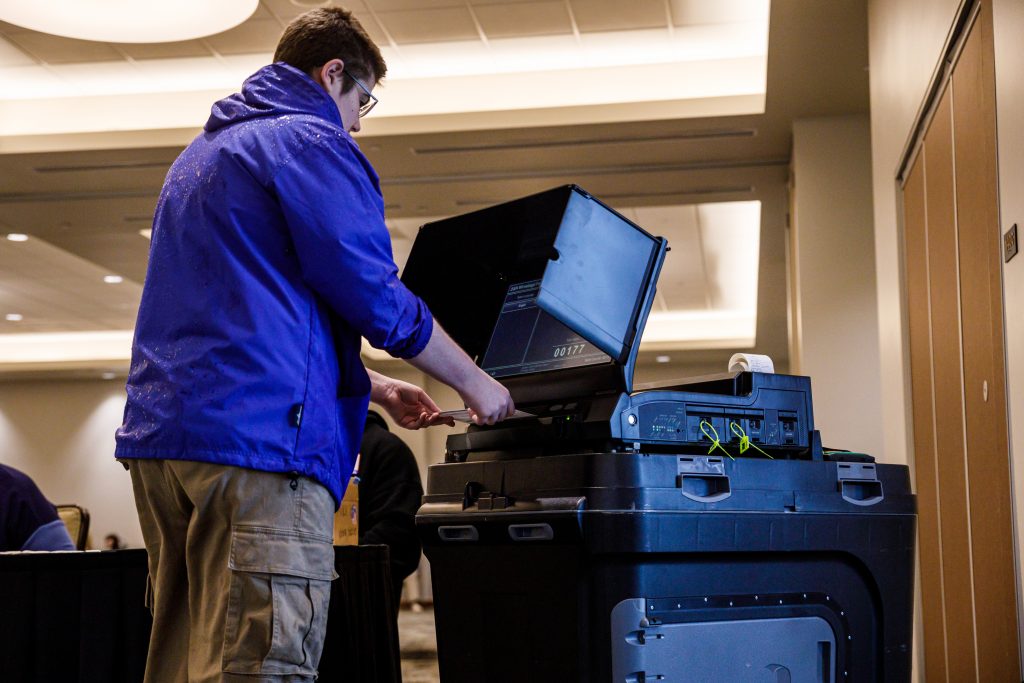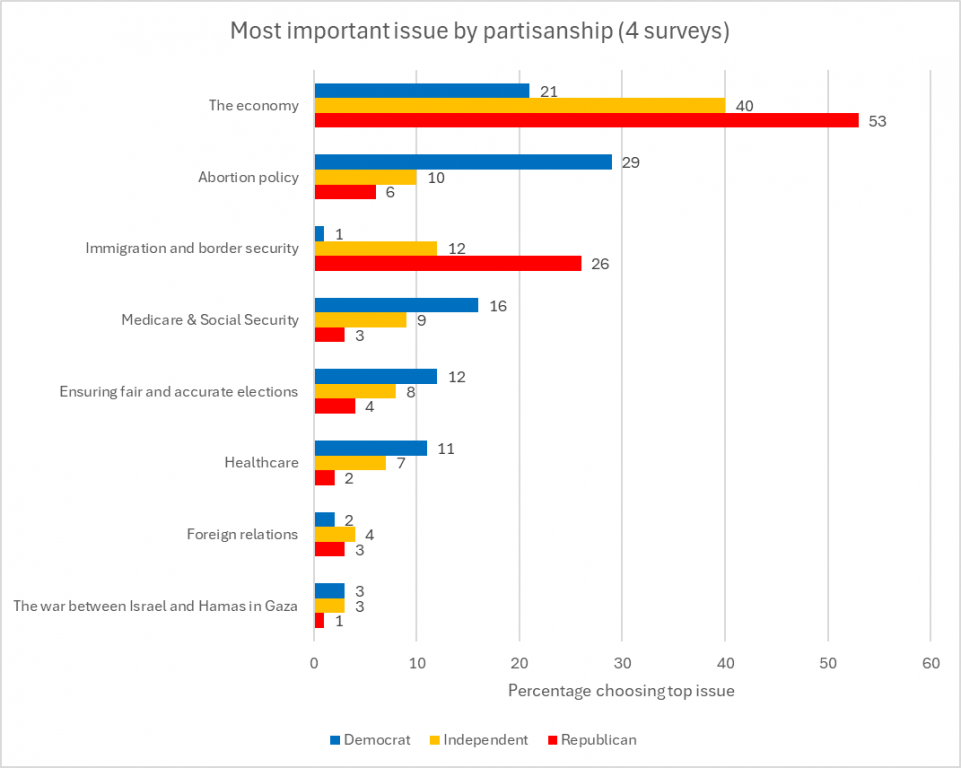What the 2024 Election Tells Us About Wisconsin Voters
Wisconsin was the most competitive state in America. Which issues mattered?
During the runup leading to 2024 presidential, the Marquette Law poll ran four surveys of Wisconsin voters. One question asked who the voter would vote for: Vice President Kamala Harris or former President Donald Trump.
In many cases expressed preferences varied widely depending on what groups respondents belonged to. Perhaps most attention was caught by the stark differences in preferences between men and women. As the graph below shows, 57% of the men making the choice preferred Trump, compared to 41% of women.
There are a number of similar examples:
- Age: Young voters were most favorable to Dems. By contrast, those aged 45 to 59 were most favorable to Trump.
- Education: college graduates were most favorable to Harris
- Religion: born-again Christians were overwhelmingly supportive of Trump. There was little difference between Catholics and mainline Protestants. The strongest support for Harris came from those who said they had no religion.
By contrast, income accounted for little of the difference between preferences for candidates.
During the course of the campaign, numerous polls were published by many organizations. Several sites also appeared that combined the individual poll results. These agglomeration sites weighted some polls more heavily than others, based on their judgement as to the quality of the individual polls.
In September, polls suggest that Harris had a small advantage nationally and in Wisconsin and most of the other competitive states, but the differences are very small and not statistically significant. As the campaign progressed, polls become less favorable, leading to her loss nationally and in all seven of the states.
In attempting to explain Harris’ loss, a number of commentators have pointed to the short time that she had to introduce herself. Yet as time passed, her polling nationally, and in Wisconsin and the other competitive states, became less positive and more negative. That continued right into election day, the results suggest.
In the end, Wisconsin lived up to its reputation as a highly competitive state. In fact, based on the percentage difference between winner and loser, it could justifiably be considered as the nation’s most competitive state.
During the campaign, the Marquette poll asked voters what they considered the most important issue. As shown in the next graph, the economy was rated as the most important issue by 39% of the respondents. The was followed by abortion at 15% and immigration and border security at 13%.
The next graph breaks down those results by party affiliation. Some 53% of Republicans chose the economy as their most important issue. Add in immigration and 79% of Republicans chose one or the other of those two issues.
By contrast, Democrats’ response was scattered among five issues. Abortion policy was chosen by the largest number of Democrats, followed closely by the economy.
By most measures, including the growth of jobs, the very low unemployment rate, strong gross domestic product (GDP), and increasing real wages, the Biden and Harris economy was among the strongest the nation has enjoyed. Why then were so many voters negative when talking about “the economy”? It appears that the rise in prices dominated when assessing the economy.
If you think stories like this are important, become a member of Urban Milwaukee and help support real, independent journalism. Plus you get some cool added benefits.
Data Wonk
-
What Kind of Economy Will Trump Inherit?
 Nov 13th, 2024 by Bruce Thompson
Nov 13th, 2024 by Bruce Thompson
-
Is Immigration A “Happy Problem?”
 Oct 30th, 2024 by Bruce Thompson
Oct 30th, 2024 by Bruce Thompson
-
Were We Better Off Four Years Ago?
 Oct 26th, 2024 by Bruce Thompson
Oct 26th, 2024 by Bruce Thompson






























I love Data Wonk!!!! Keep it coming, please.
Is there a way to ‘data wonk’ the best way to lead Trump voters in WI to the light?
Many thanks to the Urban Milwaukee staff for this high-quality, high-information publication!!!